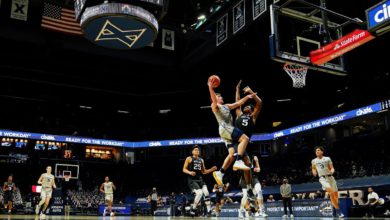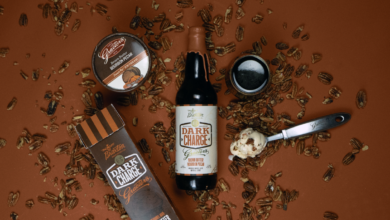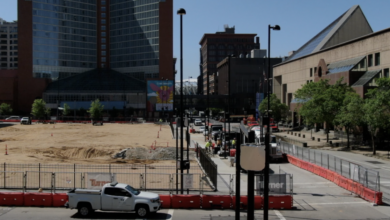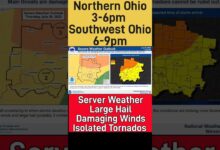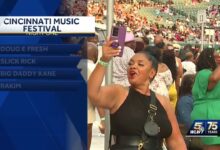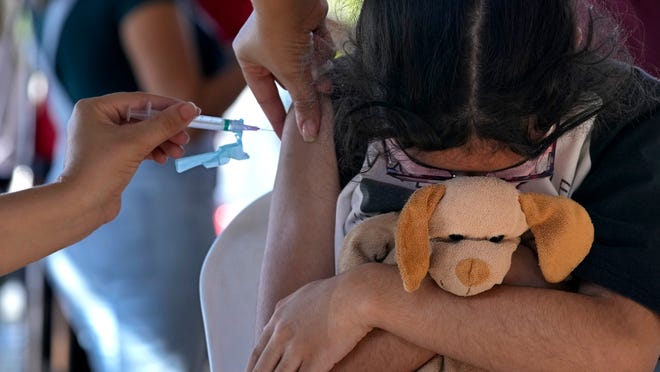
A new poll shows Americans' fears about COVID-19 are up as cases skyrocketed in January, prompting most Americans to avoid large crowds even as masking and vaccine rates remain mostly stagnant.
Gallup, a global analytics and advice firm well known for its polling, released the results of its latest poll Thursday morning. The firm has regularly polled Americans on their level of concern related to the coronavirus pandemic.
The latest poll of 1,569 U.S. adults, conducted online Jan. 3 through 14, found a steep rise in the percentage of Americans who said the pandemic is "getting worse," as compared to fall 2021 data.
"Worry has jumped ... and is now the highest it has been since last winter, before COVID-19 vaccines were readily available to the general public," a summary of poll results says.
How does COVID-19 affect me? Don’t miss an update with the Coronavirus Watch newsletter.
WATCH:Where and how you can find at home COVID-19 tests
Americans' optimism had increased when vaccines started rolling out and when case counts declined following the delta surge. But even though a winter spike in omicron cases was coupled with good news about severe disease, over half of respondents said they think the pandemic is getting worse.
“There was a lot of optimism that things would be better by the time we got to this point," Megan Brenan, the lead author of the report, told USA TODAY.
Most Americans are avoiding large crowds, but masking mostly flat
As cases soared, more Americans reported practicing social distancing behaviors, the poll found.
A majority of Americans (56%) said they avoided large crowds in the past week because of their concern about catching the coronavirus, a higher percentage than at any point since mass vaccine roll-outs went into effect in the spring, according to poll data.
It also found that less than one-in-five Americans say they have dined inside a restaurant in the previous 24 hours, down from late fall data.
Meanwhile, masking has leveled off, with about the same percentage of Americans wearing masks in Sept. 2021 through Jan. 2022.
Brenan said she was surprised to see recent levels of mask wearing hover around 72% compared to rates of around 90% during the second half of 2020.
"That’s surprisingly low given the transmissibility of omicron," she said.
Brenan said state laws preventing businesses and schools from enforcing mask mandates could factor into some people's decision to not mask up.
“If masks aren’t mandated, you’re going to have a significant proportion of the population who are just not going to do it," she said.
Vaccination rates 'hit a wall'
The percentage of Americans who say they will get vaccinated has remained steady since Sept. 2021, despite an increase in the percentage of unvaccinated Americans who say they are worried about contracting the virus.
“I feel like maybe we’ve hit a wall with how many people are willing to be vaccinated," Brenan said.
Brenan said there was "some movement" between Aug. and Sept., or during the delta surge, in the percentage of Americans who said they would be vaccinated. But during omicron, rates have been "exactly the same."
Political polarization persists
The new data showed that there was a bipartisan uptick in worry about the coronavirus, but the trend was about twice as strong for Democrats as it was for Republicans — another example of the partisan divide that has long defined America's pandemic response.
Masking and vaccination status continue to "diverge sharply" along political lines, the report said, with 94% of Democrats and 65% of Independents reporting masking in the past week, compared to 48% of Republicans.
Brenan said she'd "never seen" anything close to the level of political polarization shown in different data like rates for using masks and vaccines, which have consistently revealed intense political polarization throughout the pandemic.
As attitudes continue to shift, as they may when omicron cases wane, Brenan said she's waiting to see if Americans will "look over their shoulder" in fear of the next possible variant, or whether they'll "let themselves feel more optimistic."
Source link


